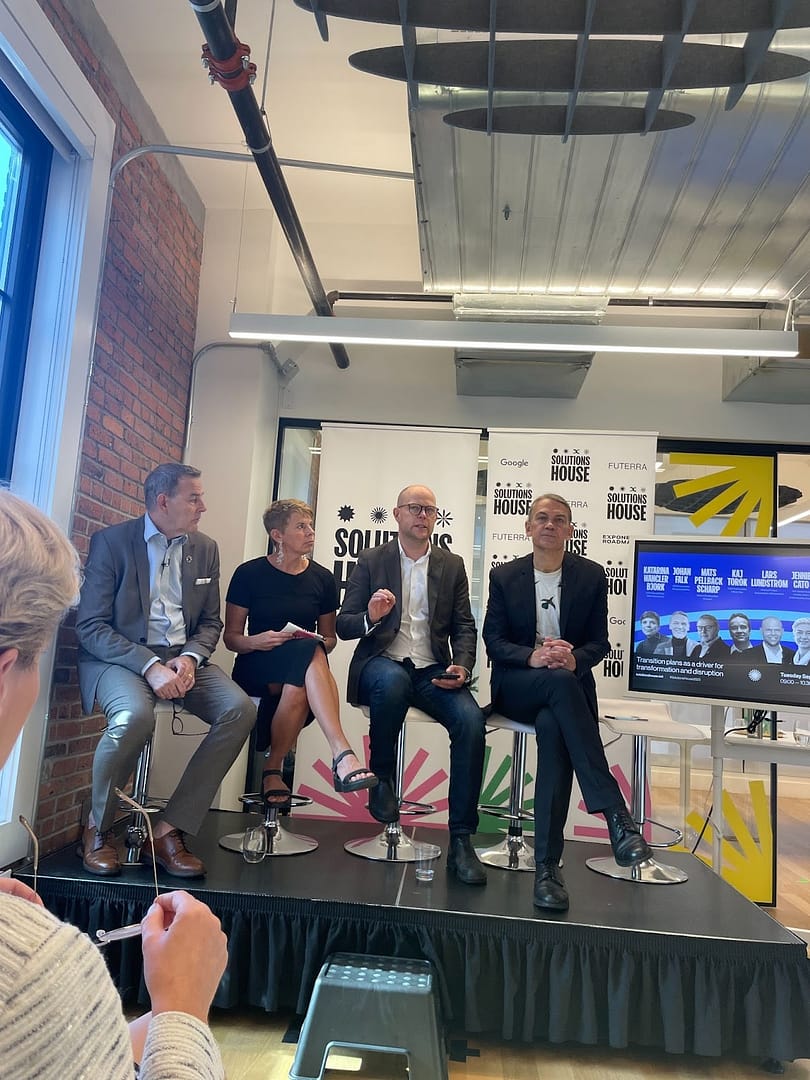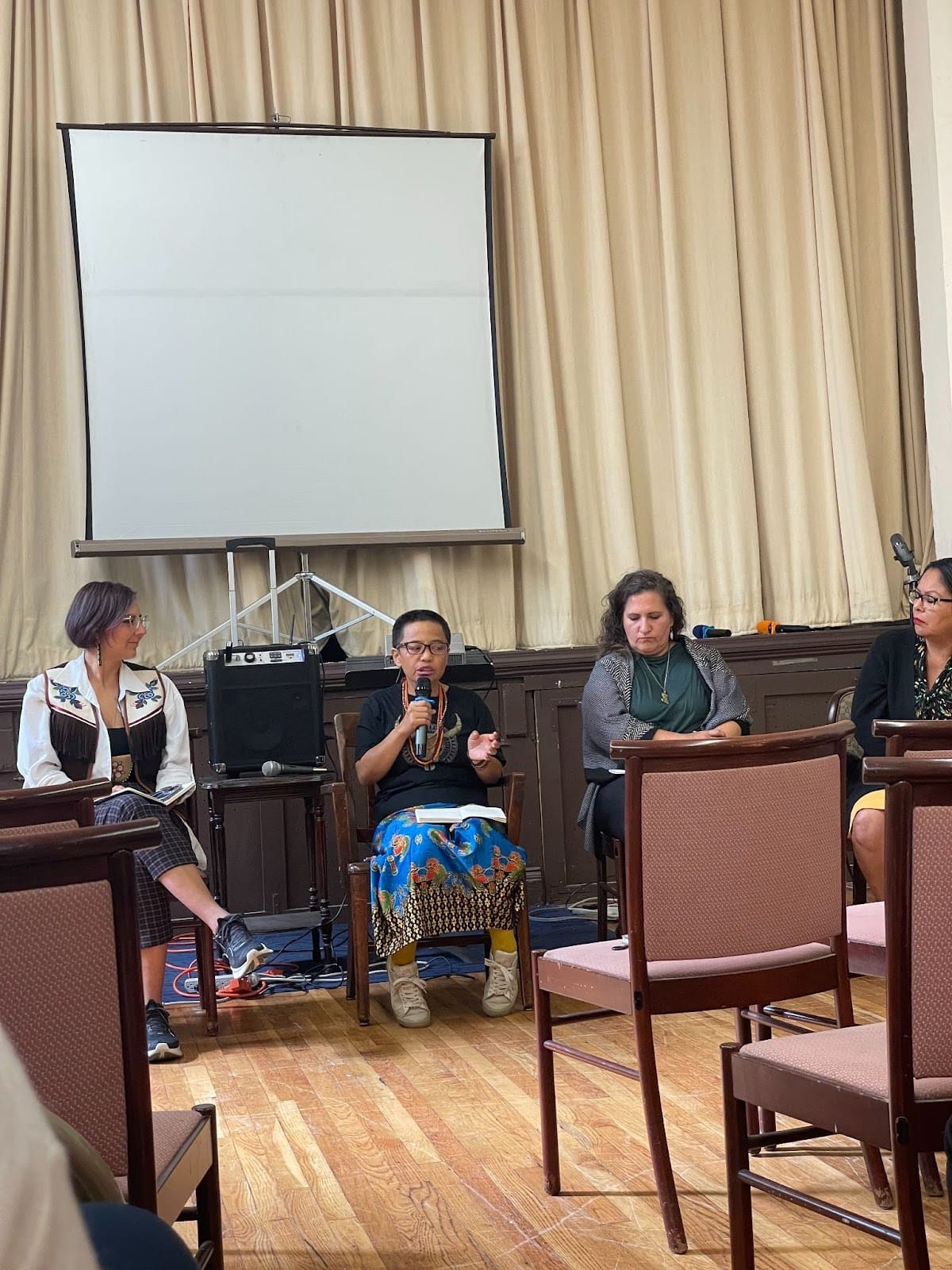In September, FES was at New York Climate Week. In the second of three blog posts, Kat shares a reflection on the different types of solutions at NYCW, and how technological solutions are not the sole drivers of resilience. In fact, to have a truly climate-resilient future, Kat shares her thoughts on how we need to better recognize the importance of solutions around uplifting marginalized communities and defeating the harmful systems that have perpetuated the climate crisis.
From the heights of the 63rd floor of the One World Trade Center, a poignant statement echoed: “We have been addicted to the sound of the world falling apart.” That line stayed with me.
New York Climate Week (NYCW) was, as expected, a mix of genuine initiatives and the usual greenwashing. But amidst the clamour, there were moments of clarity and inspiration. Panama’s move to involve its citizens in rooftop solar projects? Brilliant. Learning that Vanuatu is now a carbon-negative country? Absolutely heartening. And Portugal’s ambitious shift from a 60% coal dependency to aiming for 100% renewables by 2025? (They’re already at 80% renewables). That’s the kind of forward-thinking we need.

Image Description: Solutions House panel event, “Transition plans as a driver for transformation and disruption” featuring speakers (left to right) Mats Pellbäck Scharp (Ericsson), Katarina Wrangler Björk (Doconomy), Lars Lundstrom (H2GreenSteel), and Johan Falk (Exponential Roadmap Initiative)
Equator’s innovative use of blockchain to capture detailed energy data and H2STEEL’s massive commitment to cut steel production emissions by a whopping 95% showcased the fusion of technology, sustainability, and ambition. It’s clear that consumers, in tandem with policymakers, can drive significant change.
Yet, with all these advancements, I couldn’t help but approach some of the discussions with a hint of skepticism. The metrics presented during NYCW often revolved around monetary valuations. It’s concerning to see climate policies becoming intertwined with economic ones, suggesting that our primary goal is preserving capitalism rather than our planet and its inhabitants. Many panels seemed to feature the same faces, the same jargon, and the same access to influential circles.
It’s essential to remember that we live in a world where more people succumb to air pollution than to gun violence and car crashes combined.
A particularly impactful session featured international Indigenous leaders. They highlighted the need for real structural changes, emphasizing that without these, we risk perpetuating harm for the sake of profit. As Rukka Sonolinggi, secretary-general of the Indigenous Peoples’ Alliance of the Archipelago, poignantly shared, “[Indigenous Peoples] have been made to forget ourselves.”

Image Description: Empowering Indigenous Peoples through Equitable Climate Finance Panel. Speakers from left to right: Eriel Deranger (Indigenous Climate Action), Rukka Sombolinggi (AMAN, Indigenous Peoples’ Alliance of the Archipelago), Ximena Saskia Warnaars (Ford Foundation).
The extraction of critical metals and minerals for renewable technologies poses a significant threat to Indigenous communities. Asking these communities to cede their lands for the “greater good” is a continuation of historical injustices.
We have already taken so much, how can we possibly in good consciousness ask for more?
“The transition is inevitable. Justice is not.” This statement resonated deeply, urging us to place justice at the heart of our solutions.
During NYCW, I wanted to learn about these types of solutions and that chase led me to several inspiring solutions, and these solutions led me to youth-led initiatives. I suppose that makes sense, as we, as young people, have the most at stake when it comes to the climate crisis.
I found myself at events such as the launch of Synchronicity Earth’s new pooled fund for youth and biodiversity, called the Chrysalis Fund. It was there that I learned about The Future Tribunal which aims to hold decision-makers accountable and create legal frameworks to protect the rights of future generations. Late one evening, I attended the Queering Climate Mixer, held by rockstar young people bringing 23LGTBQ+ folks to stress the importance of connection, joy, and the intersections of the climate movement and the liberation of all marginalized communities. I was moved by the Hides Tan Movement, which brings Indigenous youth back to their roots and communities, fostering healing, reconnection, and rehabilitation leading to an increased level of biodiversity stewardship.
We must remember that it’s not enough to support the “sexy technology” pieces of work when tackling the climate crisis. We cannot fund the technology without funding the political and social infrastructure that enables a flourishing world. In this pivotal moment, we need a revolution – not just in our minds but in our hearts and I believe it’s the connections we forge now that will shape our collective future.